Contents
Every owner of a personal plot knows that weeds can and should be fought. But weeds are very diverse, which means that the methods of dealing with them should be selected individually. How to save your garden from harmful “neighbors”, you will learn from our article.
Weed classification
Weeds are classified according to a variety of characteristics. Basically, they are divided into juvenile and perennial. The difference between these groups lies in the method of reproduction: young weeds reproduce only by seeds, while perennials can sprout, that is, reproduce vegetatively. You can get rid of perennial weeds only by completely destroying their root system.
Depending on the “nutrition” weeds are divided into parasitic and non-parasitic. The former cannot exist without a host plant, while the latter can grow and develop on their own.
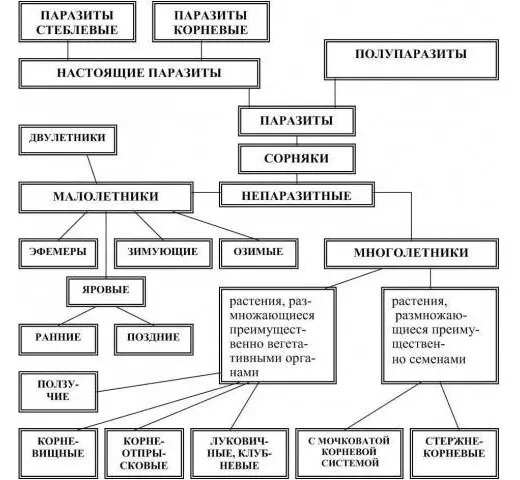
Video “How to destroy weeds on your site”
In this video, experts talk about effective methods of dealing with unwanted vegetation in the beds and in the garden.
common weeds in the garden
Some types of weeds are especially fond of “feeding” next to garden crops. We have highlighted the most common ones.
couch
The most famous and widespread weed. It is quite difficult to deal with it – wheatgrass is not afraid of either thorough weeding or digging up the soil. Especially strongly this plant “loves” potato beds.
The wheatgrass looks like this: thin sharp blades of bright green color, rough to the touch, and during the breeding season it produces elastic, thin, greenish spikelets.
The main thing in the fight against wheatgrass is to try to clean the soil from the roots of the weed as much as possible. This will help deep weeding with “breaking” the root system of the plant. A more time-consuming method is manual pulling out of grass and spikelets with a root. In this case, it is imperative to use gloves – wheatgrass blades are very sharp and easily injure fingers and palms.
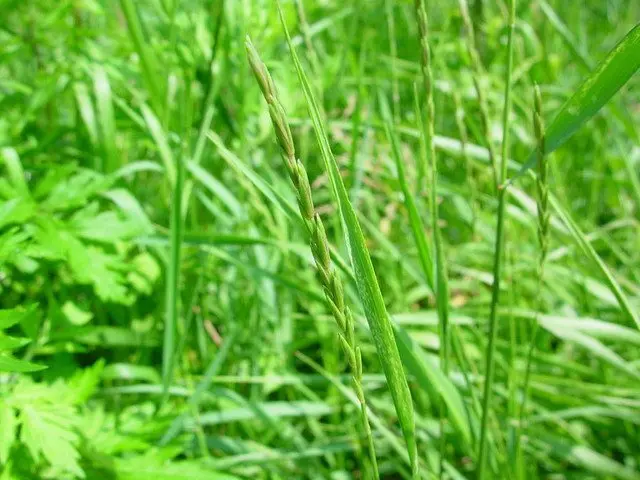
field bindweed
Who doesn’t know bindweed? Creeping, creeping plant with small oval leaves and beautiful white-pink flowers. Moreover, the stems are so strong that if the leg gets tangled, you won’t break out! In the people, bindweed is often called “birch”.
The fight against bindweed can be a long one. It can be broken through or weeded out, and it is not at all necessary to throw it away, since bindweed is an excellent feed for livestock. And it can also be used in folk medicine for the treatment of heart disease.
The root system of bindweed is very extensive. To eliminate it, various herbicides are used. Moreover, one treatment, as a rule, is not enough, so you will have to spray the garden with herbicides at least once a year.
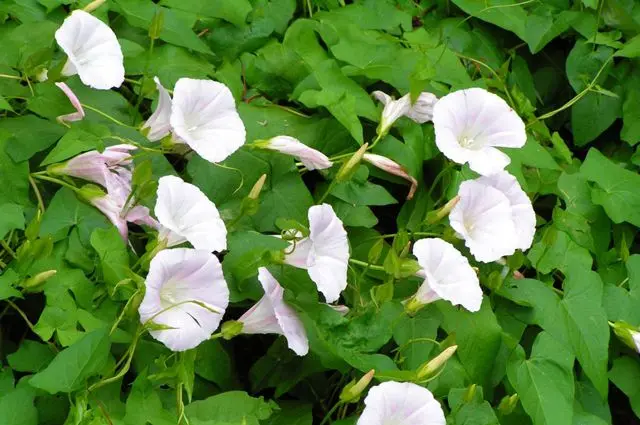
purslane
An annual weed plant. It is easily recognizable by its red stem and small but fleshy leaves. During flowering, small yellow inflorescences appear. The blooming purslane looks very beautiful, but it’s better not to give yourself time to admire it, but rather grab the glanders and start weeding.
Unlike bindweed and wheatgrass, purslane is easy to deal with. The main thing is to take action in time and prevent the weed from growing too strongly. Small shoots are easily pulled out by hand, and regular weeding will help prevent the appearance of purslane in the future.
Thrush, or asterisk
A very controversial plant. On the one hand, a malicious weed, which is quite difficult to cope with due to the large number of seeds. On average, chickweed produces about 15 thousand seeds per season, so it spreads at a tremendous speed.
On the other hand, wood lice are a useful plant that both people and animals can use as food. It is added to salads, used as a seasoning for meat, added to borscht, vinaigrette, rice and other dishes. A compote of chickweed is considered an excellent source of vitamin C.
Thus, fighting wood lice, you can kill two birds with one stone: get rid of the weed and diversify the daily menu.
Shiritsa thrown back
A very common weed. It grows more often in fields with grain crops, but it also occurs in vegetable gardens. The amaranth has a thick and deep red root, it grows to a depth of more than 2 m, so it is ineffective to fight it mechanically – by weeding, pulling out, etc.
Various herbicides have shown themselves well in the fight against amaranth. But if you are not a supporter of the use of chemicals in your personal plot, you can use folk methods of struggle.
The places where amaranth grows can be covered with thick cardboard or any other material that does not let in sunlight. Without light, seeds cannot germinate. And in the summer, when the sun warms up, it will become not only dark for the covered seeds, but also hot, and the chances that they will germinate will become even lower.
Common bilberry
Resistant perennial weed. Barnyard seeds remain viable even when unripe. The plant is not afraid of mowing and weeding and quickly grows again. Moreover, it is also resistant to most herbicides. Most often, the barnyard attacks the beds of carrots, beets and potatoes. He especially loves warm and humid weather, so if the summer turned out to be rainy, you need to be prepared for the abundant growth of the barnyard in the garden.
Since it is difficult to get rid of barnyard grass, it is best to take preventive measures: loosen the soil more often, mow the grass regularly, and be sure to check all seeds before planting and storing.

Cleavers
If you do not fight with the bedstraw, it grows to a meter height, obscuring the sunlight next to the growing plants. Like the barnyard grass, it is resistant to herbicides, so the bedstraw should be carefully weeded out in the spring, as soon as the seeds sprout. Although the plant is easy to pull out by hand, because the root and stem of the bedstraw are very weak.
Bedstraw is a conditionally poisonous plant, so it should be handled very carefully.
Despite the fragility, the bedstraw is dangerous. It draws all the moisture out of the soil, and your crop may die even with heavy watering.
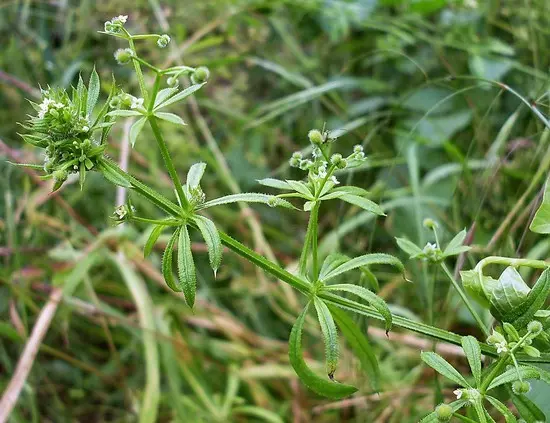
lady’s purse
Since childhood, we know what a shepherd’s bag looks like. And we also know about its wide application in traditional medicine. And it helps to stop the blood, and treats diseases of the genitourinary system, and removes toxins from the body. But here’s what to do when this weed begins to feel at home in our garden, not everyone knows.
Meanwhile, removing this weed is very simple – the shepherd’s purse is easily machined. The usual regular weeding will help to permanently eliminate the problem.
Field yacht
Yarutka is very similar to a shepherd’s bag, so they are often confused. But unlike the shepherd’s purse, the yarutka is distinguished by increased survival. The plant does not die in severe frosts and easily tolerates dry hot summers.
If you do not want the yarutka to settle in your garden, pull out young plants in a timely manner, preventing flowering and seeding.
Artemisia ragweed
This plant with large green leaves, capable of reaching human height (and even more!) And causing serious allergies, is the scourge of many household plots.
If one plant has appeared somewhere in the corner of the garden, you can be sure that very soon this weed will grow in all directions. The root of this weed is very deep, it can germinate to a depth of more than 4 m, drying up the soil and drawing useful substances out of it.
The sooner you start fighting ragweed, the better. Small bushes are best uprooted immediately. But with extensive thickets of this weed can only be dealt with with the help of chemicals.
Thistle pink
The main difficulty in the fight against rose thistle is its very long root. Every year it grows 2–3 m deep. Accordingly, the older the plant, the more difficult it is to remove it. Garden crops invaded by sow thistle receive neither water nor minerals from the soil, and quickly die. Orchard trees and grapes also suffer greatly if pink thistle grows nearby.
This thorny weed must be dealt with in a complex manner, combining deep weeding, mulching and the use of herbicides, the action of which is aimed at destroying the root system.

lawn weeds
If you are the proud owner of a lawn, be aware that it is also prone to weed growth. Let’s figure out which weeds prefer to grow on lawn grass.
Bluegrass
An annual plant that can often be found on lawns. It is difficult to remove the bluegrass, because it is very tenacious. He does not care about temperature fluctuations, nor heavy rains, nor prolonged drought.
Nevertheless, it is possible and necessary to fight bluegrass. Thorough weeding of the lawn will be effective approximately 3 weeks after planting the lawn grass. After weeding, the soil must be tamped and watered well. This weeding is best done regularly. Ideally, every time after mowing the lawn.
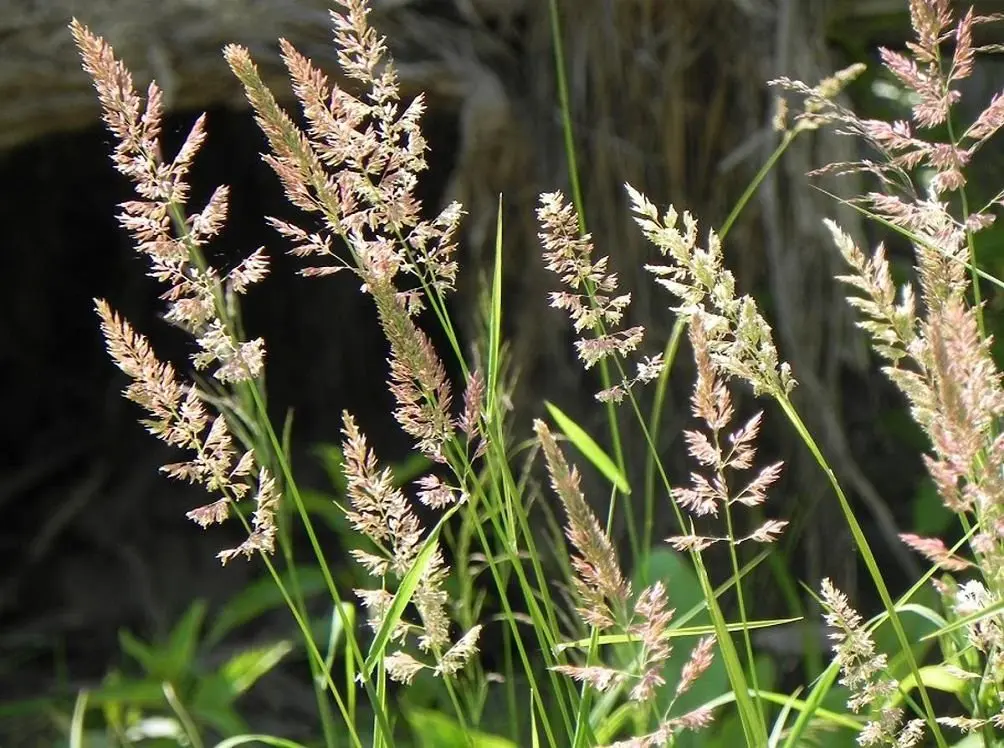
Dandelion
Yellow flowers can be a problem and ruin any well-maintained lawn. If you have the patience for a long fight, we can recommend low mowing the lawn 1-2 times a week. Grass will grow back, but dandelions will not. But this will take weeks or even months. If the result is needed quickly, then only herbicides will help.
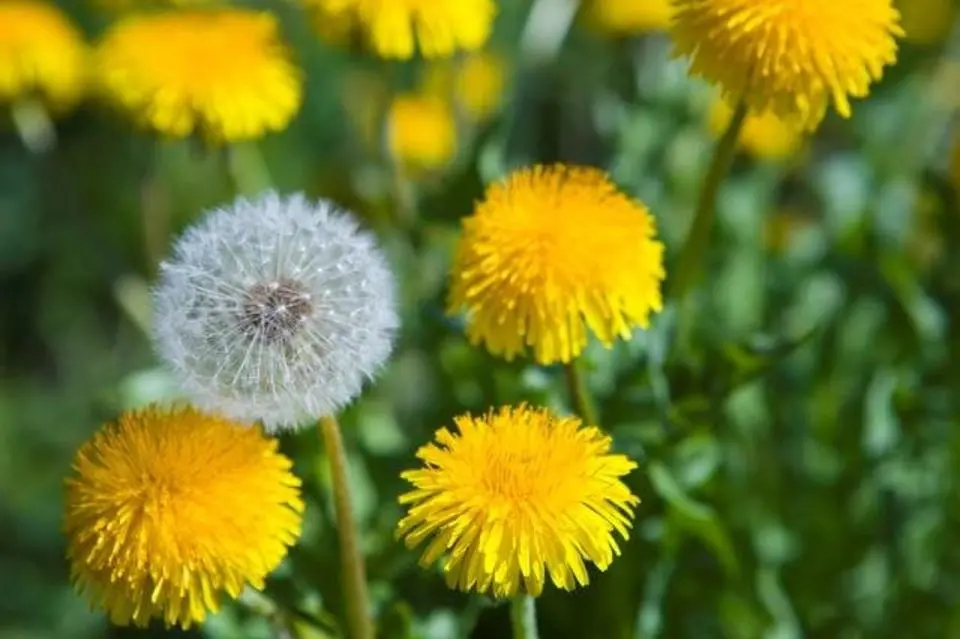
Buttercup creeper
Buttercup can be fought in various ways:
- regular weeding;
- use of herbicides;
- pulling out plants with a special tool for removing weeds;
- soil mulching;
- covering the lawn for the winter with a dense film.
If you decide to use chemicals, keep in mind that in extreme heat they cannot be used to combat buttercup.
Plantain
Plantain responds very well to herbicides. If you did not manage to treat the lawn before you seeded it, use selective chemicals. They will destroy the weeds, but will not damage the lawn grass. This plant does not like heterogeneous soils, therefore, to prevent its occurrence, mix lawn soil with sand.
Speedwell
Unfortunately, it will never be possible to completely get rid of Veronica, if she has already chosen your lawn. Therefore, you can either put up with it and even make it an element of landscape design (Veronica blooms beautifully), or periodically remove it from the lawn along with the topsoil.
One consolation: the presence of Veronica filamentous on the lawn means that no other weeds, most likely, do not threaten your lawn.
Clover
If you dream of a flowering lawn that you don’t need to take special care of, then you shouldn’t fight clover. But if you are trying to sow an ideal lawn with green grass, then sweet clover can and should be destroyed.
To prevent clover from appearing on the lawn, the latter must be carefully looked after. Leave lawn grass for a week without watering, and clover will easily clog it with its shoots. Also, this weed is very fond of soils poor in nitrogen, so the problem can be easily solved with the help of nitrogen-containing fertilizers.
If everything is in order with the nitrogen content in the soil, clover bushes can be removed by hand.
In no case do not mow the lawn on which clover grows – this only stimulates its growth.
Author’s advice
Moss
There are several ways to remove moss from your lawn. As a rule, moss appears on very acidic soils, so you can “drive” it away using alkaline fertilizers – compost, manure or lime. You need to feed the soil during the growing season, 2-3 times will be enough.
Loosening the soil also brings tangible results. Moss is a surface plant, therefore it is easily removed mechanically.
A soda solution will also help to defeat the moss. We dissolve 200 g of soda in 2 liters of warm water, mix well and spray over the area.
Preventive measures to prevent the appearance of moss:
- Don’t over water your lawn.
- Use fertilizers containing potassium, iron and nitrogen.
- Avoid excessive shading of the lawn whenever possible.
Mary White
White gauze is best removed from the site using selective chemicals so that the lawn grass does not suffer during processing. Preference should be given to systemic preparations, which, getting on the leaves of the plant, then penetrate into the stem and roots. Thus, the weed is destroyed from the inside.
It is best to spray the plant in the “three-leaf phase”, when it is most susceptible to chemical attack.
Oxalis ordinary, or hare cabbage
A very common weed in the Moscow region and other regions of Our Country. It is easy to deal with it – regular weeding is usually enough. The key word here is “regular”: ideally, the lawn will have to be weeded daily, the maximum gap between weeding is 3 days.

Useful weeds in the area
Not all wild weeds are harmful. The beneficial properties of many of them have been known since ancient times. It may turn out that cures for all diseases can be found literally under your feet. However, we should not forget that before using any of the following plants, you should definitely consult a doctor. In addition, most herbal extracts and decoctions are contraindicated for pregnant and lactating women.
Cornflower blue
Blue cornflower flowers are successfully used in folk medicine to treat diseases of the kidneys, bladder, liver and biliary tract. The flowers are dried and stored in a dry place under a tightly closed lid. Externally, a decoction of cornflowers is used for skin diseases and bleeding. It is used even in pediatric practice for the treatment of digestive disorders in children.
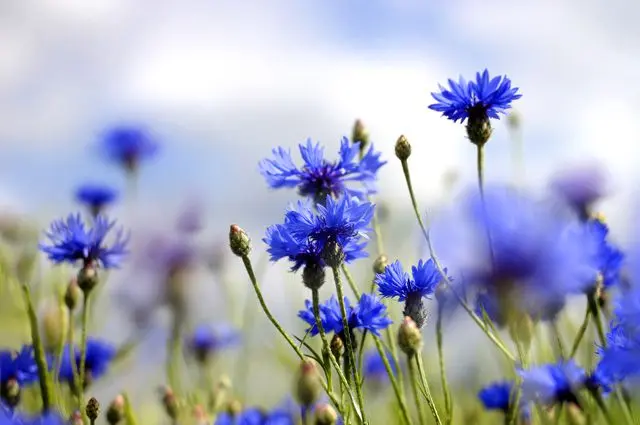
meadow clover
Unlike ordinary clover, meadow flowers have a crimson color. Panacea plant: has anti-inflammatory and antipyretic properties, contains vitamins B6, C, K and E, normalizes fat metabolism and reduces the amount of bad cholesterol in the blood. Tea from the flowers and leaves of meadow clover cleanses the blood and is great for coughing.
Horsetail
Horsetail has a diuretic and hemostatic effect. It lowers blood sugar levels, so horsetail infusion is useful for diabetics.
Horsetail should not be taken orally for a long time. This can lead to lung problems and allergies.
Nettle
Nettle not only “bites” the legs. You can make delicious borscht from it or add it to a salad. The pungency of the plant is also considered useful: patients with sciatica are whipped with nettle brooms, such “cauterization” also helps with other diseases of the back and joints.
Nettle decoction helps with uterine bleeding and hair loss. It is taken orally for helminthiasis and prolonged cough.
Highlander bird, or knotweed
If you are a poultry farmer, knotweed will be the most valuable vitamin supplement in poultry feed. And it is also very useful for people. In particular, infusions and decoctions of knotweed, even in official medicine, are widely used to treat urolithiasis and gynecological diseases.
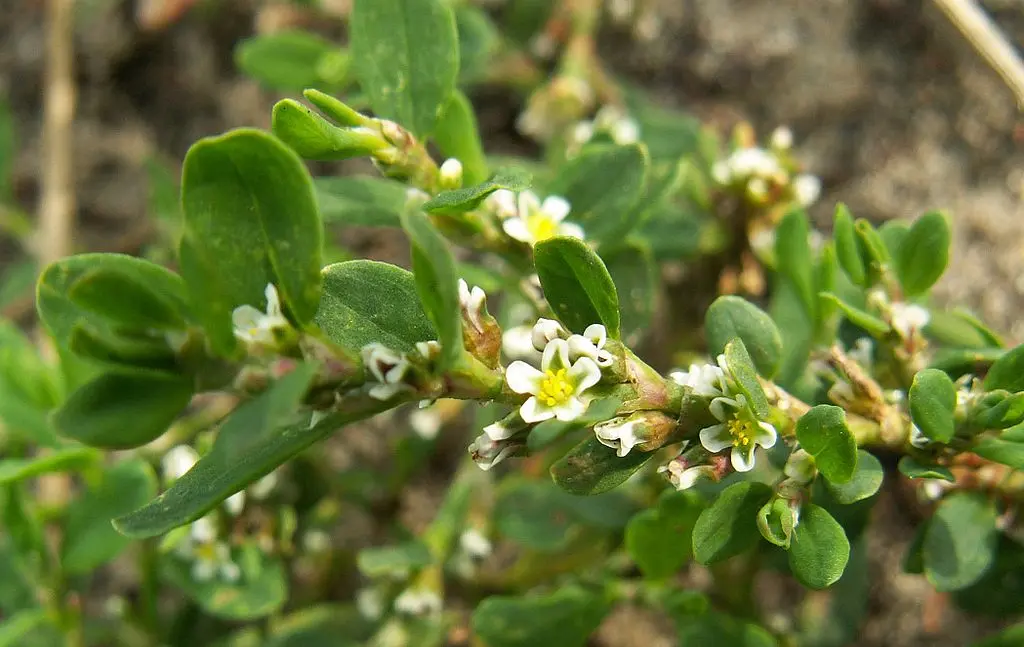
Weed Prevention
It is much easier to prevent the appearance of pest plants on the site or lawn than to deal with them. General recommendations include regular weeding, careful digging of the soil after harvest, checking and sorting seeds before sowing, mulching the soil for the winter, applying fertilizers.
We found out that there are many different types of weeds, and you can deal with it in different ways, and with some there is no need to fight at all. The main thing is to regularly take care of the garden, garden or lawn, and then not a single weed can encroach on your crop.









